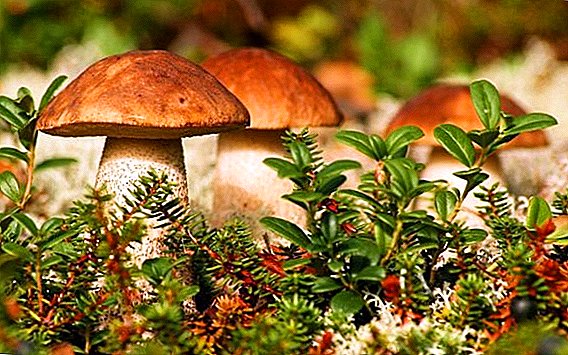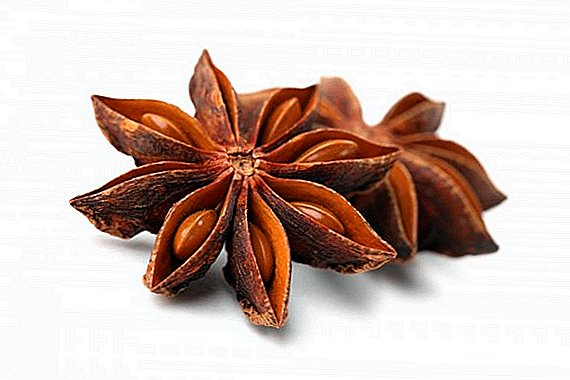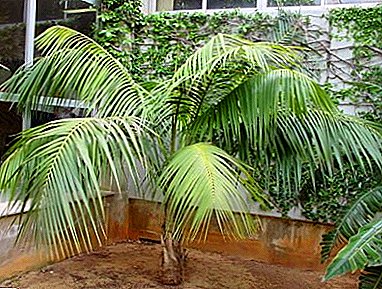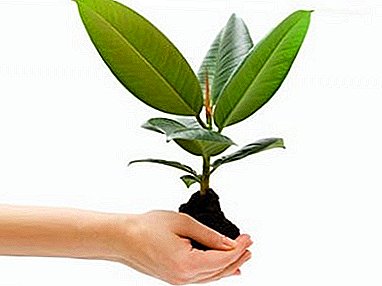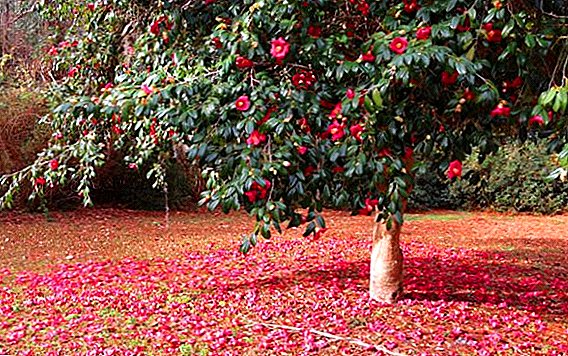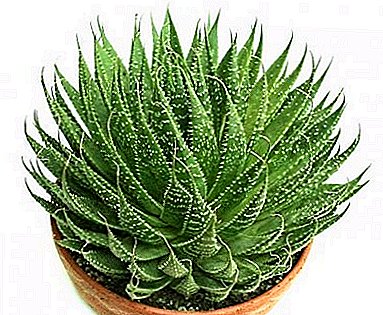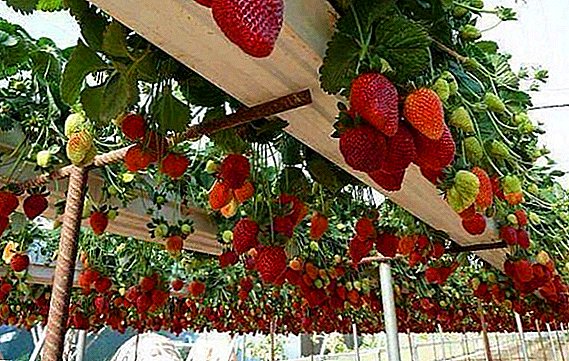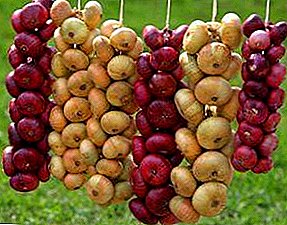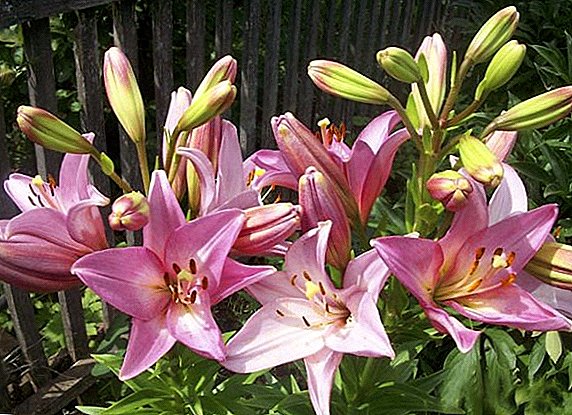 Lilies - gorgeous, delicate and luxurious flowers. The variety of their varieties is staggering, as there are more than 6000 thousand. They are very popular among gardeners and flower growers. Lilies can be grown in open ground and in room conditions. Their most important advantage is that the plants are unpretentious and do not require special skills and training in the care. Even a beginner can grow a gorgeous daylily. The main thing is to know the basic rules of care and regularly follow them. We consider in detail the care of the plant after the growing season.
Lilies - gorgeous, delicate and luxurious flowers. The variety of their varieties is staggering, as there are more than 6000 thousand. They are very popular among gardeners and flower growers. Lilies can be grown in open ground and in room conditions. Their most important advantage is that the plants are unpretentious and do not require special skills and training in the care. Even a beginner can grow a gorgeous daylily. The main thing is to know the basic rules of care and regularly follow them. We consider in detail the care of the plant after the growing season.
Cut the flower stalks
It is only necessary to remove the flower stalks, but in no case the plant stems, since it is thanks to the stems and leaves that the plant receives vitality. Peduncles, on the other hand, draw nutrients over themselves, and when they fulfill their decorative function, they should be cut off. 
Important! After removing the leaves and stem of the plant, the bulb stops its development and growth.It is better to think in advance about the neighborhood with flowers in the flowerbed, so that when the lilies start blooming, there is no question what to do with their not very decorative look. To do this, you just need to sow grassy annuals in the foreground, which will hide the fading leaves.
 If the lily is grown in indoor conditions, that is, in a pot, and it has faded, you should know what to do next, namely, wait until the inflorescences dry up and fall off. Then the leaves will begin to wither and turn yellow, at this time it is recommended to reduce watering, and when the leaves become completely dry, stop it altogether.
If the lily is grown in indoor conditions, that is, in a pot, and it has faded, you should know what to do next, namely, wait until the inflorescences dry up and fall off. Then the leaves will begin to wither and turn yellow, at this time it is recommended to reduce watering, and when the leaves become completely dry, stop it altogether.Learn how to care for tulips and daffodils when they bloom.
We fertilize lilies
Caring for lilies is necessary even after flowering. With the right approach to fertilization and irrigation, it will be possible to fill the bulb with useful substances and add strength to it for future harmonious growth and flowering. During the rest period, it is best to feed the plant with potash-phosphorus fertilizer.
Experienced gardeners believe that the use of mineral fertilizers for this flower after the end of the vegetative period is undesirablebut before planting, diluted mineral preparations for bulbous can be added to the soil - they usually do not contain nitrogen. 
Important! It is impossible to fertilize lilies with manure or compost in its pure form - this may cause a bulb burn and adversely affect further growth and flowering.A positive effect is observed after application of humus mixed with straw into the soil: this mixture is added to the soil in the fall and creates additional protection against frost.
Digging bulbs
Often flower growers are tormented by the question of what to do with lily bulbs after flowering. It all depends on the climatic conditions and varieties of plants. For example, the tubular lilies must be excavated, and the Asian lilies are very cold-resistant and can easily winter in the ground. The need to dig up the bulbs occurs 4-5 years after planting, as they are overgrown with "kids."  To do this, dig up the onion, carefully separate the small onion from the mother and rinse thoroughly. This procedure is recommended not earlier than 3-4 weeks after completion of flowering. If a further autumn planting is planned, then you can dig up the bulbs in August, and for spring planting this can be postponed, postponing to September-October.
To do this, dig up the onion, carefully separate the small onion from the mother and rinse thoroughly. This procedure is recommended not earlier than 3-4 weeks after completion of flowering. If a further autumn planting is planned, then you can dig up the bulbs in August, and for spring planting this can be postponed, postponing to September-October.
Familiarize yourself with the nuances of growing other bulb flowers on your site: tulips, daffodils, gladioli, autumn crocus, snowdrop, hionodoksy, dahlias.
Proper storage
Store adult bulbs in a cool, dark and ventilated place. A great option for storage is an autumn planting in pots with soil, which must also be kept in a cool room. But if both options are suitable for mature onions, small onions are stored exclusively in the ground, as they are still very weak and will dry out without soil. They must be planted no later than 7 days after digging.
Did you know? Bulbs of some varieties of lilies are used in traditional medicine. So, for example, white lily is effective in combating edema, and tiger helps with inflammation and boils.
 Soil for wintering should be mostly sandy, and the size of the pot should be selected based on the size of the bulb. After planting, you should place the pots with seedlings in the basement, cellar or refrigerator - the main thing is that the air temperature is in the range of + 4-6 ° C. If the planting material is stored without soil, it is necessary to dry the onions well, and then place them in a plastic bag and put them away in a cool place. Before that, you can lightly sprinkle them with sand or sawdust.
Soil for wintering should be mostly sandy, and the size of the pot should be selected based on the size of the bulb. After planting, you should place the pots with seedlings in the basement, cellar or refrigerator - the main thing is that the air temperature is in the range of + 4-6 ° C. If the planting material is stored without soil, it is necessary to dry the onions well, and then place them in a plastic bag and put them away in a cool place. Before that, you can lightly sprinkle them with sand or sawdust.Did you know? Some lily bulbs are edible, and in Korea, Japan and China are considered a delicacy. They taste very much like sweet potatoes.
How you care for the lilies after flowering, during the rest period, it depends on what your flowers will be in the next season. With consistent observance of simple rules, an excellent result is guaranteed - smart healthy flowers that will be protected from diseases and pests.  Good care also has a positive effect on the size and duration of flowering: the positive qualities of this not too laborious process on the face. Once again I want to emphasize that the plant especially needs your care and care in a dormant period, do not deny it to him.
Good care also has a positive effect on the size and duration of flowering: the positive qualities of this not too laborious process on the face. Once again I want to emphasize that the plant especially needs your care and care in a dormant period, do not deny it to him.


